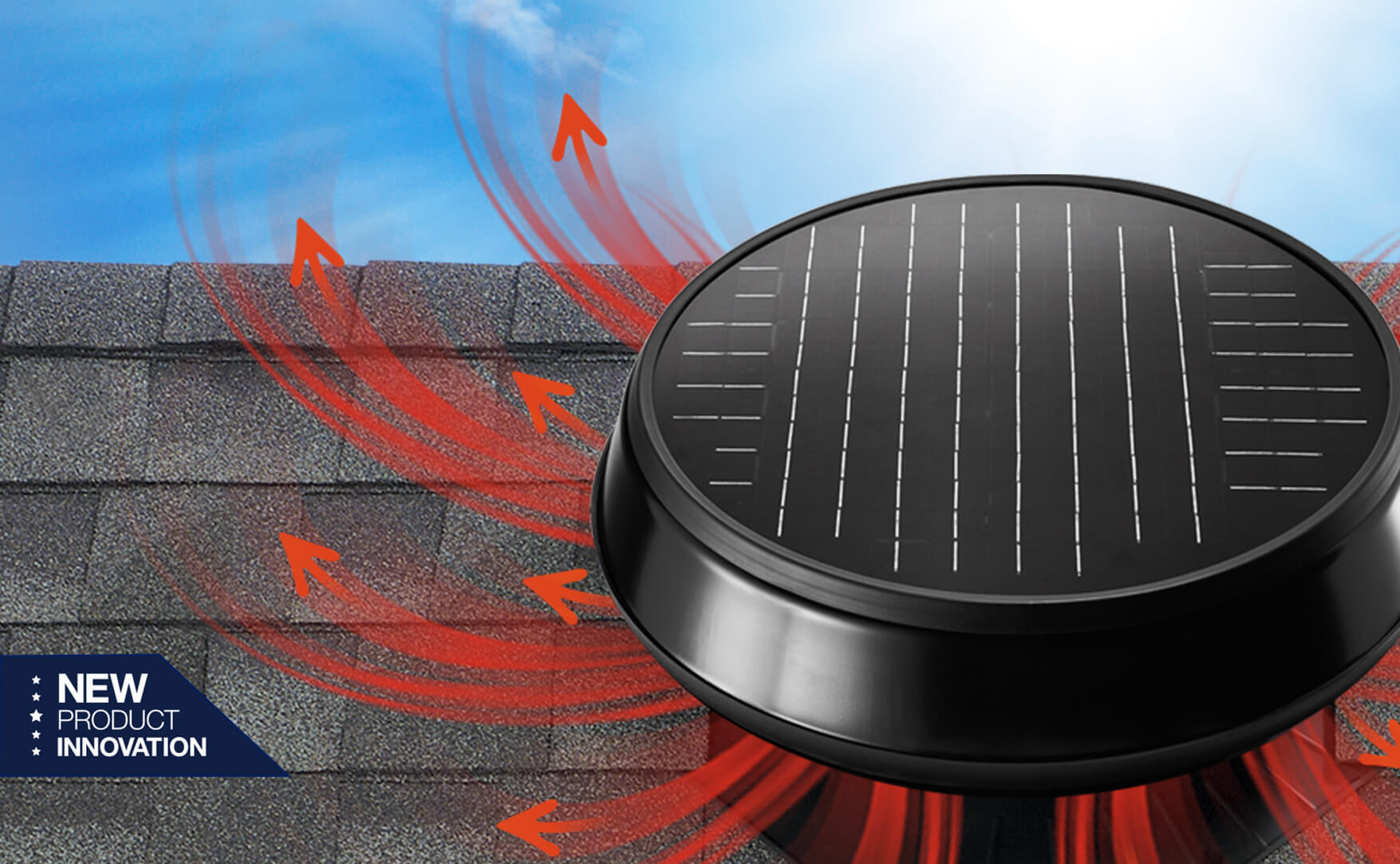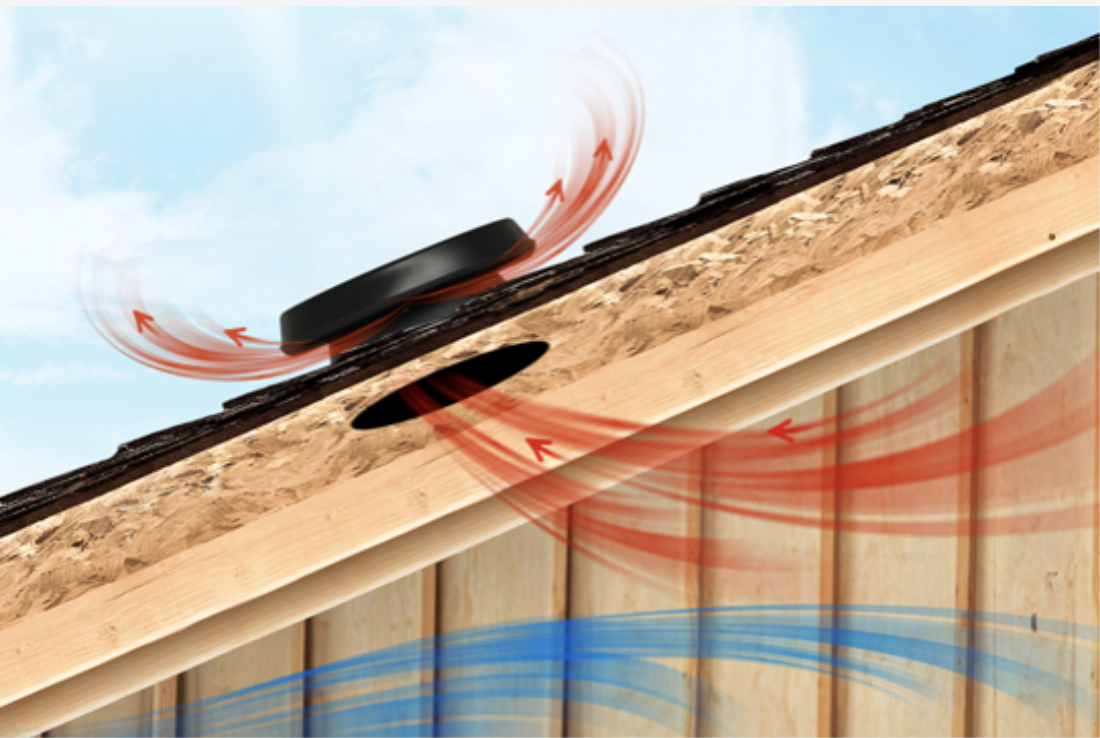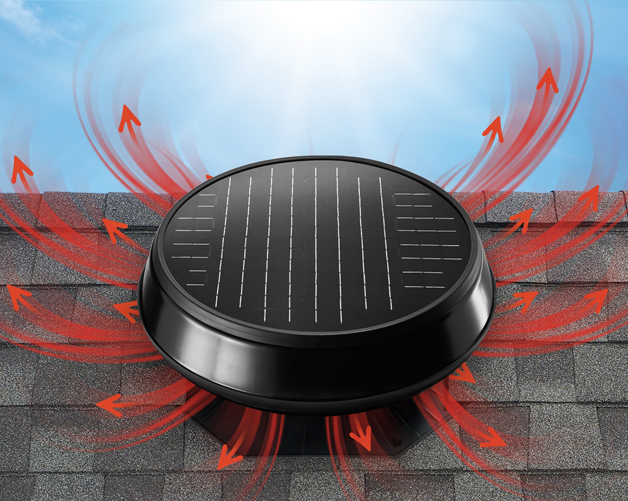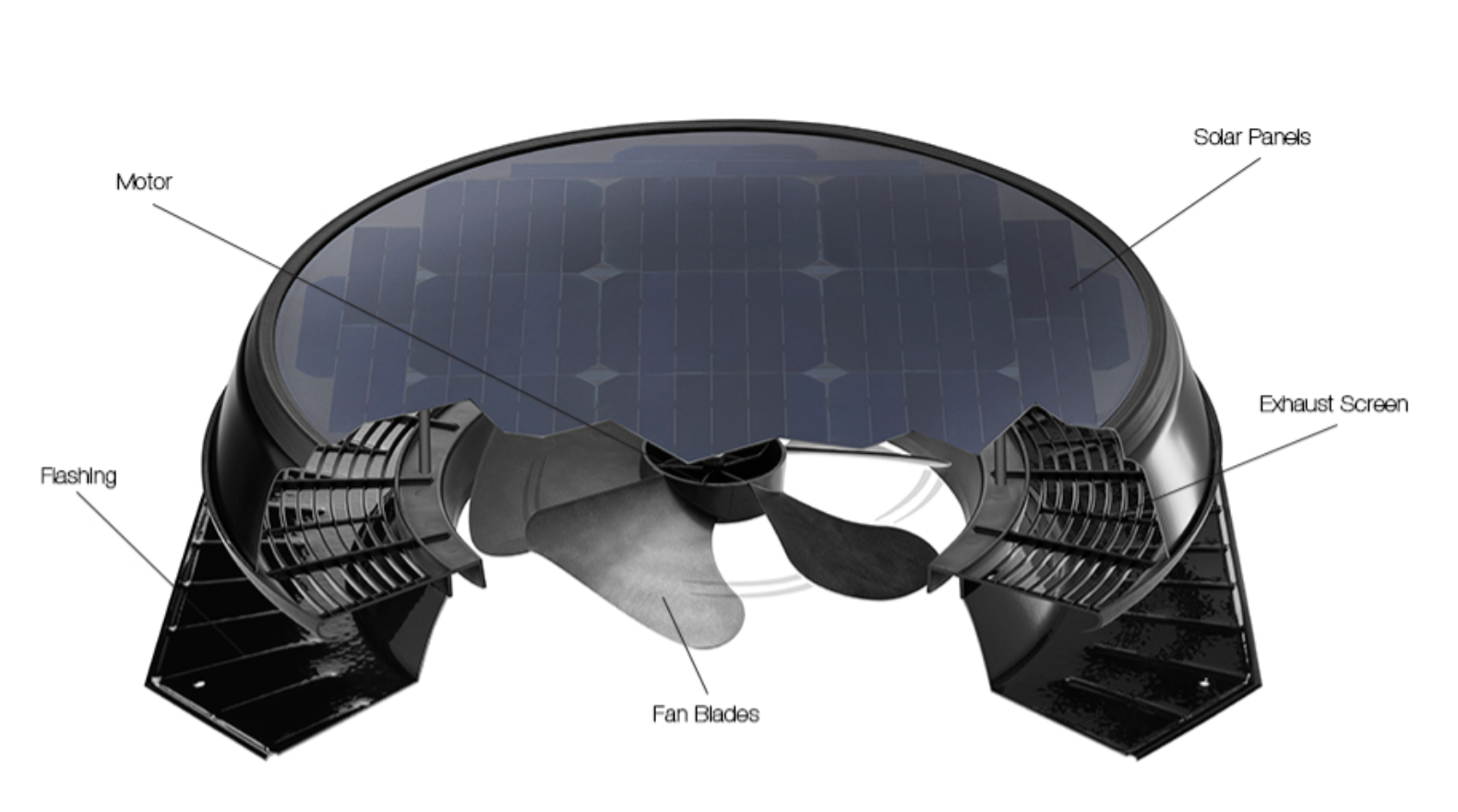How Effective Are Solar-Powered Attic Fans?
If you add the right size attic fan and the right number of attic fans to your home they can make a tremendous difference in lowering the temperature in your attic and in your home. Want to keep your house comfortable year-round while protecting the attic and roof from a battery of hazards? An attic fan may be just what you’re looking for.

It’s midsummer, and for hours and days, the sun has been beating on the roof of your home. Measurements have shown that, given the right weather conditions, typical roofing materials can reach up to 150 degrees Fahrenheit. That heat eventually transfers from the outside of the roof to the sheathing. From there, it penetrates the insulation and roof framing materials, raising the temperature of the attic to a precarious extreme.
But summer isn’t the only season during which the attic faces a threat. In winter, when windows are shut tight, there’s considerably less ventilation for the humidity generated by cooking, laundry, and showers. With nowhere else to go, that moist air accumulates in the attic, where it can bring about a battery of risks.
Indeed, no matter the time of year, there are good reasons to give extra attention to your attic and the stresses that it undergoes.
How Important is Attic Ventilation?
A blisteringly high attic temperature isn’t uncomfortable only for the unfortunate soul standing in the unfinished space. If it goes high enough, the temperature in the attic can influence other rooms and make them hotter. Such inefficiency forces the air conditioning system to work harder than would otherwise be necessary, and of course, you must pay for that extra effort when the energy bills arrive every month.
Beyond the extra cost, trapped heat and moisture can end up doing real damage to your home by fostering mold growth. In extreme cases, excess moisture can even rot away portions of the key structural framing found in the attic.
Another possible consequence of runaway attic temperatures: The most common types of shingles—asphalt shingles—are plenty capable of withstanding heat when it comes from the sun. But when heat comes into contact with their undersides, those same shingles can fail prematurely.
Fortunately, there’s a straightforward solution to heat and moisture problems on and under the roof.

For money savings, a more comfortable home, and reliable protection for your roof (both its structure and shingles), consider installing an attic fan.
Designed to reduce both heat and moisture, a roof-mounted attic fan operates by a simple principle. The fan pulls warm air out through a roof vent, drawing in cooler outdoor air through existing vents located along with the soffits (on the underside of the roof overhang). That exchange of stale, warm air for fresh, cooler air relieves the added pressure put on the air conditioning. Now, the system can run more efficiently—and you can pay less on your monthly utility bill.

Does a Solar Attic Fan Save Money?
In the past, attic fans were always hardwired into the home and powered by electricity. Many homeowners saw that, while the attic fan may have been saving them some money, those savings were being erased by the cost of installing and operating the fan.
Luckily that’s no longer an issue with the Solatube Solar-Powered Attic Fan, which runs not on your home’s electrical system but on free and abundant natural sunlight.
Even as it keeps your attic cool and dry, the Solatube Solar-Powered Attic Fan requires no hands-on operation or maintenance. In fact, because of its whisper-quiet operation it’s likely that you’ll never even notice it’s running!
For one thing, Solar Star has been designed and manufactured to resist everything nature might throw its way, from wind and rain to snow and hail. Its power source—a series of small photovoltaic panels—is located right on the exterior cap of the fan. Made of durable composite, the cap reliably shields the more vulnerable components, ensuring powerful ventilation year-round. The brushless motor and lightweight, non-corrosive fan blades work in concert to keep the operating noise level down to a whisper.

Solar Star becomes even more effective with its add-ons. One such option is a thermal switch that automatically activates the fan once the attic temperature reaches a certain threshold.
A similarly handy extra: If you live on a shady lot and worry that your solar-powered attic fan won’t get enough sun to operate throughout the day, check out the add-on solar panel. An ingenious solution to the problem of tree cover—and for that matter, cloud cover—the supplemental panel can be placed on the sunniest part of your roof to ensure continuous operation.
It’s ironic: Problems caused by the sun—ranging from mere discomfort to devastating damage—can be solved with a Solatube Solar-Powered Attic Fan that relies on the sun!
One size fits all? I don’t think so.
For maximum effectiveness, Solatube Solar-Powered Attic Fans come in multiple sizes to fit your unique home.
- The RM 2400 is Solatube’s biggest attic fan ever, with an industry-leading 35-watt solar panel that generates maximum energy for major air movement.
- For smaller attics, open ceiling garages and even sheds, you may not need as much power. That’s where the RM 1500 comes in. With a 16-watt solar panel, it creates just the right amount of airflow for efficient venting of heat and moisture.
Either model can be installed on all types of roof materials and mounted in one of three ways:
- The sleek and unobtrusive low-profile mount is ideal for most pitched-roof applications.
- If a roof accumulates a great deal of snow, go with the high-profile mount, which raises the solar panel and fan well above the roof plane.
- The pitched-roof mount orients the solar panel to maximize exposure to the sun.
Indeed, with attics of any size or roofs of any profile, there’s a way for Solatube Solar Star technology to provide powerful, effective ventilation. And it’s well worth mentioning that if your attic already happens to be fitted with a passive vent, you can turn it into an active, solar-powered ventilation system with the IM 1200. Unlike the others in the Solar Star line, the IM 1200 mounts indoors, directly behind the passive vent opening. Whatever your needs, Solatube can match them.
Dollars and Sense – Is a Solar Attic Fan Worth the Cost?
Accurately sized and properly installed Solatube Solar-Powered Attic Fan can trim your energy bills by as much as 25 percent. Also, remember that the federal government is offering a 30 percent tax credit for systems that rely on solar photovoltaic technology. Consider those savings alongside what you stand to save from month to month. Right now seems like a fine time to start protecting your attic and roof from year-round stresses while also enhancing your family’s comfort!
If you are looking at transitioning your home to a more sustainable and cost-friendly ventilation system, call 888.SOLATUBE or visit Solatube.com to find your local dealer

This post has been brought to you by Solatube. Its facts and opinions are those of BobVila.com.
